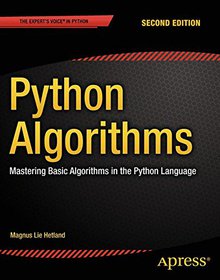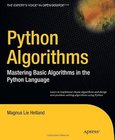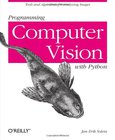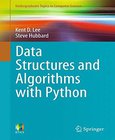Python Algorithms
Mastering Basic Algorithms in the Python Language
2nd Edition

Book Details:
| Publisher: | Apress |
| Series: | Apress , Mastering |
| Author: | Magnus Lie Hetland |
| Edition: | 2 |
| ISBN-10: | 148420056X |
| ISBN-13: | 9781484200568 |
| Pages: | 320 |
| Published: | Sep 04 2014 |
| Posted: | Nov 19 2014 |
| Language: | English |
| Book format: | |
| Book size: | 4.73 MB |
Book Description:
Python Algorithms, Second Edition explains the Python approach to algorithm analysis and design. Written by Magnus Lie Hetland, author of Beginning Python, this book is sharply focused on classical algorithms, but it also gives a solid understanding of fundamental algorithmic problem-solving techniques. The book deals with some of the most important and challenging areas of programming and computer science in a highly readable manner. It covers both algorithmic theory and programming practice, demonstrating how theory is reflected in real Python programs. Well-known algorithms and data structures that are built into the Python language are explained, and the user is shown how to implement and evaluate others.What youll learnHow to transform new problems to well-known algorithmic problems with efficient solutions, or show that the problems belong to classes of problems thought not to be efficiently solvableHow to analyze algorithms and Python programs using both mathematical tools and basic experiments and benchmarksHow to understand several classical algorithms and data structures in depth, and be able to implement these efficiently in PythonHow to design and implement new algorithms for new problems, using time-tested design principles and techniquesHow to speed up implementations, using a plethora of tools for high-performance computing in PythonWho this book is for The book is intended for Python programmers who need to learn about algorithmic problem-solving, or who need a refresher. Data and computational scientists employed to do big data analytic analysis should find this book useful. Game programmers and financial analysts/engineers may find this book applicable too. And, students of computer science, or similar programming-related topics, such as bioinformatics, may also find the book to be quite useful. Table of Contents1. Introduction2. The Basics3. Counting 1014. Induction and Recursion and Reduction5. Traversal: The Skeleton Key of Algorithmics6. Divide, Combine, and Conquer7. Greed Is Good? Prove It!8. Tangled Dependencies and Memoization9. From A to B with Edsger and Friends10. Matchings, Cuts, and Flows11. Hard Problems and (Limited) Sloppiness12. Pedal to the Metal: Accelerating Python13. List of Problems and Algorithms14. Graph Terminology!15. Hints for Exercises
Download Link:
Related Books:
Python Algorithms
Mastering Basic Algorithms in the Python Language
Python Algorithms explains the Python approach to algorithm analysis and design. Written by Magnus Lie Hetland, author of Beginning Python,this bookis sharply focused on classical algorithms, but it also gives a solid understanding of fundamental algorithmic problem-solving techniques. The book deals with some of the most important and challenging areas of programming and computer science, but in a highly pedagogic and readable manner. The book covers both algorithmic theory and programming practice, demonstrating how theory is reflected in real Python programs. Well-known algorithms and data structures that are built into the Python language are explained, and the user is shown how to implement and evaluate others himself. What youll learn Tra...
Programming Computer Vision with Python
Tools and algorithms for analyzing images
If you want a basic understanding of computer visionamp;#8217;s underlying theory and algorithms, this hands-on introduction is the ideal place to start. Youamp;#8217;ll learn techniques for object recognition, 3D reconstruction, stereo imaging, augmented reality, and other computer vision applications as you follow clear examples written in Python. Programming Computer Vision with Python explains computer vision in broad terms that wonamp;#8217;t bog you down in theory. You get complete code samples with explanations on how to reproduce and build upon each example, along with exercises to help you apply what youamp;#8217;ve learned. This book is ideal for students, researchers, and enthusiasts with basic programming and standard mathematical skills....
Data Structures and Algorithms with Python
This textbook explains the concepts and techniques required to write programs that can handle large amounts of data efficiently. Project-oriented and classroom-tested, the book presents a number of important algorithms supported by examples that bring meaning to the problems faced by computer programmers. The idea of computational complexity is also introduced, demonstrating what can and cannot be computed efficiently so that the programmer can make informed judgements about the algorithms they use. Features: includes both introductory and advanced data structures and algorithms topics, with suggested chapter sequences for those respective courses provided in the preface; provides learning goals, review questions and programming exercises in each cha...
2007 - 2021 © eBooks-IT.org



